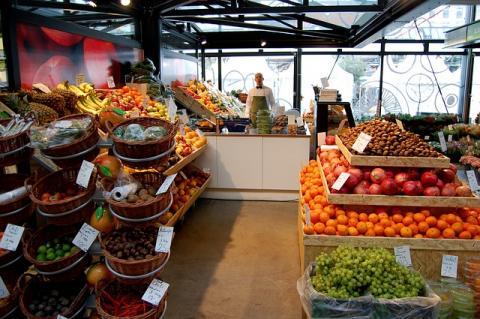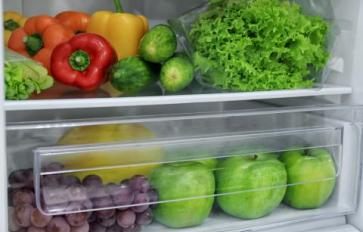
Grocery shopping: a necessary evil as an adult, and an absolute requirement if you aim to cook at home. But if you’re anything like the average consumer, you’ve spent hours wandering in and out of aisle after aisle of packaged foods, staring at nutrition labels, and feeling downright baffled by the amount of peanut butter brands on the shelf (seriously, isn’t it just peanuts, oil, and salt?)
In a previous life, I worked in administration for a natural foods cooperative (re: a grocery store), and I’ve learned a few things about healthy shopping habits. Below, I share my secrets for a healthier grocery cart and an overall happier shopping experience.
1.Make a list - Yes, I know this is obvious, but seriously, make a list! Shopping without a list can be a frustrating experience filled with impulse buys and missing recipe ingredients.
Each week, my husband and I make a habit of writing down 3-4 meals and then use that as our grocery list base. Then we’ll tack on any routine shopping trip items such as almond milk, coffee, and dish soap. (Hint: If you break out your list into categories [e.g., fruits & vegetables, frozen foods, bakery], your shopping trip will be a breeze!)
2.Shop the perimeter of the store - In most grocery stores, the fresh foods are sold on and around the perimeter shelves. Things like produce, dairy, meats, and fresh deli items are all typically found outside of the aisles of boxes and cans. If you stick to the perimeter, you can ensure your shopping cart will be filled with fresh and whole foods. Having trouble creating meals without boxes or cans? Aim to cook 1-2 meals each week only using whole foods and ingredients, and then slowly build on your repertoire. Before you know it, you’ll forget about the endless aisles of cereal boxes and macaroni and cheese!
3.Look for local - While the organic label seems to be getting all of the attention, local is often times best (even when an organic option is available). The term local can mean different things in different regions of the country, but I consider something local if it came from my immediate state or surrounding states. (For me this means anywhere in the Pacific Northwest.) Buying local foods ensures that foods are fresh (especially when it comes to produce, which often sits in crates on trucks for weeks on end), and contain the most amount of nutrients. It also helps to support your local farmers and producers and keeps more dollars in your local food economy. Additionally, many small, local farms utilize organic growing practices such as little-to-no pesticide use, crop rotation, and composting, but are too small to afford the expensive certification process. Do your research on local farms and companies, and seek out their products in the store!
4.Shop in bulk - If you’re not shopping in the bulk bins, you’re doing it all wrong! Shopping in bulk is an excellent way to save money (buy as much or as little as you need) and to prevent excess waste in our food system. Bulk foods are sold to the grocery store at a discounted price because packages and labels aren’t necessary for the products. Stores then pass those savings onto the consumer by making products available at lower prices than those that are packaged on the shelves.
My husband and I shop in bulk for everything from flour and sugar, to nuts and snacks, to peanut butter and honey. (You wouldn’t believe how cheap peanut butter can be!) The next time you dive into a baking recipe or have a hankering for trail mix, hit up the bulk bins. (Hint: some grocers allow shoppers to bring their own reusable containers for bulk shopping. Check with your local store, and don’t forget to weigh your container before filling!)
5.Bring your own bags - The cardinal rule for any eco-conscious shopper is to bring your own bags. While reusable shopping bags are good for the environment and helpful when you’ve purchased a lot of heavier items, they can also be a money saving tool. Many grocery stores pass on 5-10 cent savings to shoppers who bring their own bags, and some even allow you to donate those savings to a local charity. And while 5-10 cents won’t put much of a dent in your grocery bill, it really does add up! An average person shopping once a week with four to five reusable shopping bags could see an annual savings of $20-30 - that’s a trip for two to the movie theater!
Grocery shopping doesn’t have to be a tedious and miserable experience. I hope that with these five simple tips your next shopping trip is healthier, happier, and dare I say, a little bit fun! Happy shopping!








